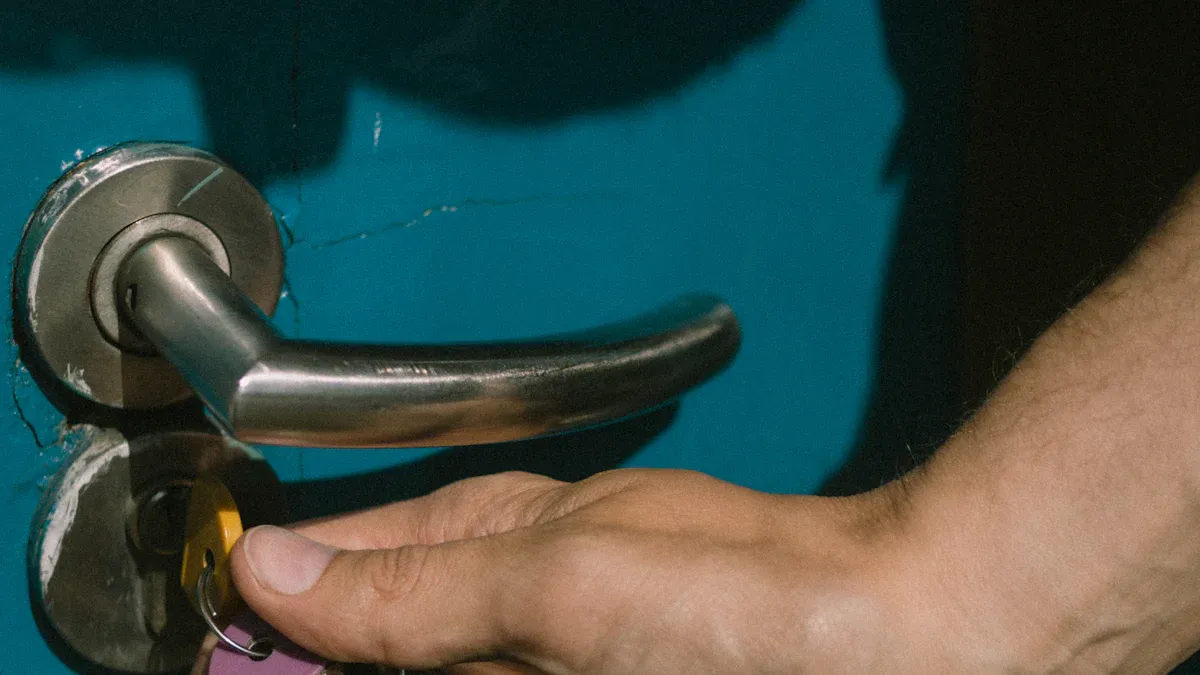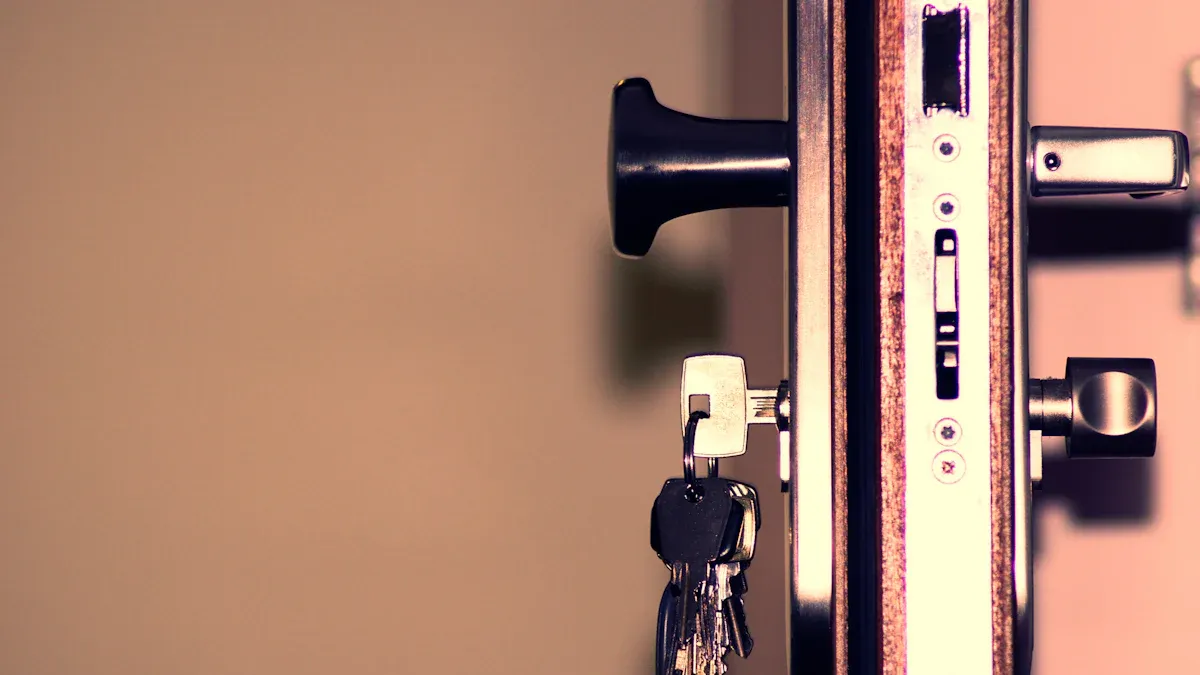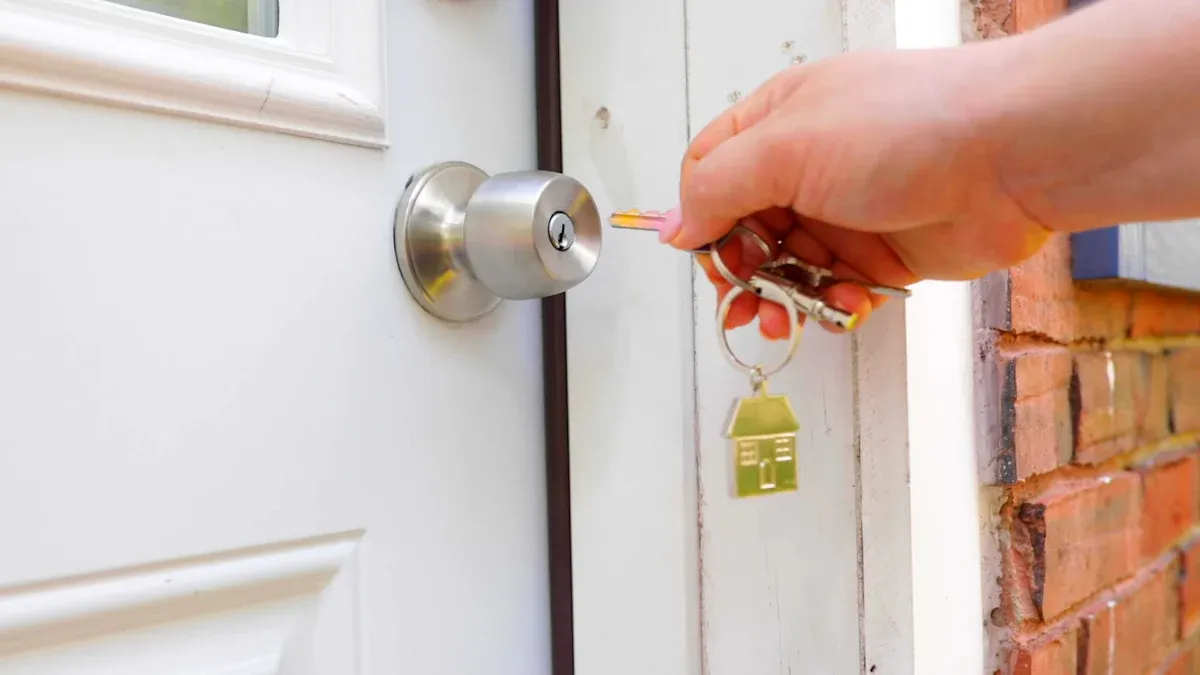
When comparing Euro profile and standard cylinder lock cores, Euro profile models often deliver higher security when equipped with advanced features. Readers who prioritize protection should choose a Security Cylinder Door Lock Core with anti-snap, anti-bump, and anti-pick technologies. Security ultimately depends on the build quality and design.
Key Takeaways
- Euro profile cylinders offer strong security with advanced features like anti-snap and anti-pick protection, making them ideal for homes and offices needing high protection.
- Standard cylinder cores provide flexible key management and easy rekeying, fitting well in large facilities and institutions with frequent access changes.
- Choosing the right lock core depends on property type, security needs, and maintenance; always select certified models with proven anti-tamper features for maximum safety.
Security Cylinder Door Lock Core: Euro Profile Cylinders

Pros of Euro Profile Cylinders
Euro profile cylinders offer advanced security features that make them a popular choice for both residential and commercial properties. Many models include 5, 6, or even 7 pins, which increases the number of possible key combinations and makes picking much more difficult. Manufacturers maintain precise mechanical tolerances, such as a 0.3mm clearance between the cylinder housing and rotor, and a 0.6mm grade difference in pins. These details help prevent manipulation and forced entry.
Specialized pin mechanisms, including lateral inward-pressing side pins, provide extra resistance against twisting attacks. Many Euro profile cylinders incorporate anti-bump and anti-drilling technologies, which protect against common break-in methods. Patented key profiles and duplication control systems help prevent unauthorized key copying.
Note: Euro profile cylinders often carry certifications like EN 1303, Secured by Design (SBD), and Sold Secure, confirming their compliance with strict security standards.
Cylinder guards protect against snapping and extraction. These cylinders are endurance tested to exceed 50,000 operational cycles and meet corrosion resistance standards such as BS EN 1670 Grade 4. The ability to rekey and configure master key systems supports flexible security management, making the Security Cylinder Door Lock Core suitable for a wide range of applications.
Cons of Euro Profile Cylinders
Despite their strengths, Euro profile cylinders have some drawbacks. Improper installation or low-quality models can expose the cylinder to snapping attacks. Some designs may protrude from the door, creating a vulnerability if not paired with a proper cylinder guard.
Replacement and maintenance costs can be higher compared to standard cylinders, especially for models with advanced features. Compatibility issues may arise with older doors or non-standard lock cases. In some cases, the Security Cylinder Door Lock Core may require professional installation, adding to the overall expense.
Security Cylinder Door Lock Core: Standard Cylinder Cores
Pros of Standard Cylinder Cores
Standard cylinder cores remain a trusted choice in many commercial and institutional settings. Their modular design allows on-site assembly, which provides flexibility and reduces inventory costs. Facility managers can rekey locks quickly without replacing the entire hardware. This adaptability supports a wide range of lock types and key systems, making standard cores highly versatile.
Many Security Cylinder Door Lock Core models in this category feature restricted keyways and advanced pinning systems. These elements help prevent unauthorized key duplication and increase resistance to picking and drilling. High-security options often include hardened steel drill pins and may carry UL 437 certification, ensuring robust protection.
Note: Standard cylinder cores often incorporate patented technologies such as multi-dimensional key verification and magnetic locking mechanisms. These features help prevent unauthorized access and key duplication.
Technical evaluations confirm the reliability and performance of standard cylinder cores:
| Evaluation Category | Description | Key Technical Aspects |
|---|---|---|
| Operation | Measures forces required for latch retraction, locking/unlocking, and key insertion/removal | Force to insert/remove key capped at 3 pounds to ensure ease of use |
| Durability | Tests longevity and consistent operation over time | Grade 1 cylinders must pass 40,000 cycles maintaining reasonable force levels |
| Safety & Security | Strength tests to resist unauthorized entry attempts | Evaluates cylinder resistance to forced entry and security breaches |
| Electrical | Performance tests for electronic input devices | Includes ESD resistance, over-voltage, and water resistance tests |
Certifications such as SKG and VdS further validate the security and durability of these cores.
Cons of Standard Cylinder Cores
Despite their strengths, standard cylinder cores present some limitations. Many models offer fewer advanced anti-snap or anti-bump features compared to modern Euro profile cylinders. Attackers may exploit these weaknesses if the Security Cylinder Door Lock Core lacks upgraded security components.
Older designs sometimes rely on basic pin tumbler mechanisms, which can be more susceptible to picking or impressioning. Compatibility with electronic access systems may require additional components or upgrades. Maintenance can become complex in large master key systems, especially if the facility uses multiple Security Cylinder Door Lock Core types.
Tip: Regular inspection and timely upgrades help maintain optimal security for standard cylinder cores.
Security Cylinder Door Lock Core: Head-to-Head Comparison

Security Features
Euro profile cylinders and standard cylinder cores both offer strong security, but their features differ. Euro profile cylinders often include advanced technologies such as anti-snap, anti-bump, and anti-pick protection. Many models use hardened steel inserts and complex pin systems. These features help prevent forced entry and manipulation. Euro profile cylinders also support patented key profiles, which limit unauthorized key duplication.
Standard cylinder cores provide robust security in commercial settings. Many models use restricted keyways and hardened steel pins. Some high-security versions meet UL 437 standards, offering resistance to drilling and picking. However, older standard cores may lack modern anti-snap or anti-bump features. Security depends on the specific model and the presence of upgraded components.
| Feature | Euro Profile Cylinder | Standard Cylinder Core |
|---|---|---|
| Anti-snap Protection | Yes (most models) | Rare |
| Anti-bump Technology | Yes (advanced models) | Sometimes |
| Patented Key Control | Yes | Yes |
| Drill Resistance | Yes | Yes |
| Certification | EN 1303, SBD, Sold Secure | UL 437, SKG, VdS |
Tip: For maximum protection, choose a Security Cylinder Door Lock Core with multiple security certifications and advanced anti-manipulation features.
Installation and Compatibility
Installation and compatibility play a crucial role in selecting the right lock core. Euro profile cylinders use a standardized design, making them compatible with many door types across different manufacturers. Installers can adjust cylinder lengths to fit various door thicknesses. However, retrofitting multipoint locks may require precise identification of the lock make and model. The 90-degree cylinder profile orientation can also present challenges during installation.
Standard cylinder cores offer flexibility for commercial and institutional doors. Their modular design allows for quick rekeying and easy replacement. However, compatibility depends on the door’s preparation, thickness, and style. Some locks require specific adjustments for unique door types, such as sliding glass doors. Experts recommend verifying door preparation, checking alignment, and confirming proper backset and bore dimensions before installation. Addressing issues like misaligned strike plates and improper screw placement ensures smooth operation.
- Key installation steps for both types:
- Verify door preparation matches lock requirements
- Check door and frame alignment
- Confirm door thickness compatibility
- Ensure proper backset and bore dimensions
- Test lock function after installation
Note: Custom manufacturing options can help achieve compatibility with unique door and lock configurations.
Cost and Maintenance
Cost and maintenance vary between Euro profile cylinders and standard cylinder cores. Euro profile cylinders with advanced security features often cost more than standard models. The price increases with the addition of anti-snap, anti-bump, and patented key technologies. Professional installation may add to the overall expense, especially for doors requiring custom adjustments.
Standard cylinder cores generally offer lower upfront costs. Their modular design allows for quick rekeying, reducing long-term maintenance expenses. Facility managers can replace cores without changing the entire lock, saving time and money. However, maintaining large master key systems can become complex and may require periodic upgrades to maintain security.
| Aspect | Euro Profile Cylinder | Standard Cylinder Core |
|---|---|---|
| Initial Cost | Higher (advanced models) | Lower (basic models) |
| Rekeying | Moderate (requires skill) | Easy (modular design) |
| Maintenance | Low (with quality models) | Moderate (large systems) |
| Professional Help | Sometimes needed | Rarely needed |
Suitability for Different Applications
Choosing the right lock core depends on the application. Euro profile cylinders suit residential properties, apartments, and commercial buildings that require high security and advanced features. Their compatibility with master key systems and patented key control makes them ideal for multi-unit dwellings and offices.
Standard cylinder cores work well in commercial, institutional, and industrial settings. Their modular design supports frequent rekeying and flexible key management. Schools, hospitals, and office complexes often use standard cores for ease of maintenance and scalability.
- Euro profile cylinders: Best for homes, apartments, and offices needing advanced security.
- Standard cylinder cores: Ideal for large facilities, institutions, and buildings with frequent access changes.
Callout: Always match the Security Cylinder Door Lock Core to the specific needs of the property and the level of security required.
Euro profile cylinders suit homes and offices that demand advanced security. Standard cylinder cores fit large facilities needing flexible key management. He should assess property type, security level, and maintenance needs before choosing. For maximum protection, select a certified lock core with proven anti-tamper features.
FAQ
What is the main difference between Euro profile and standard cylinder cores?
Euro profile cylinders often provide advanced security features. Standard cylinder cores offer modular design and easy rekeying. Each type suits different security needs and applications.
Can a homeowner install a security cylinder door lock core without professional help?
Most homeowners can install basic models. Advanced cylinders or custom doors may require professional installation for proper fit and maximum security.
How often should someone replace or upgrade their lock core?
- Replace or upgrade every 5–7 years.
- Upgrade immediately after a security breach or lost key.
- Regular inspection ensures optimal protection.
Post time: Jun-19-2025
